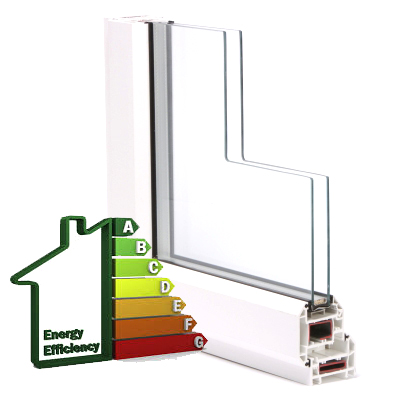Benefits of energy-efficient windows
- Smaller energy bills.
- Smaller carbon footprint.
- More comfortable home: energy-efficient glazing reduces heat loss through windows and means fewer draughts and cold spots.
- Peace and quiet: as well as keeping the heat in, energy efficient-windows insulate your home against external noise.
- Reduced condensation: energy-efficient glazing reduces condensation build-up on the inside of windows.
The costs and savings for energy-efficient glazing will be different for each home and each window, depending on its size, material and the installer you choose. Double glazing should last for 20 years or more.
To get a better idea of how much you could save by replacing your windows, use the Energy Saving Calculator on the Glass and Glazing Federation’s website, developed in conjuction with the Energy Saving Trust.
How energy-efficient glazing works
Double-glazed windows have two sheets of glass with a gap in between, usually about 16mm, to create an insulating barrier that keeps heat in. This is sometimes filled with gas. Triple-glazed windows have three sheets of glass, but aren’t always better than double-glazed windows. To choose the most energy-efficient window look for the BFRC rating.
Energy-efficient windows come in a range of frame materials and styles. Performance criteria vary according to the following:
- How well they stop heat from passing through the window.
- How much sunlight travels through the glass.
- How little air can leak in or out around the window.
What to look for
- Glass – The most energy-efficient type for double glazing is low emissivity (Low-E) glass. This often has an invisible coating of metal oxide, normally on one of the internal panes. This lets in light and heat but cuts the amount of heat that can get out.
- Gaps between the glass – Very efficient windows might use gases such as argon, xenon or krypton in the gap between the sheets of glass.
- Pane spacers – These are set around the inside edges to keep the two panes of glass apart. For maximum efficiency, look for pane spacers containing little or no metal – often known as ‘warm edge’ spacers.

